How did a solar eclipse in May 1919 help to prove Albert Einstein’s theory of general relativity? Vida Milovanovic tells the story.
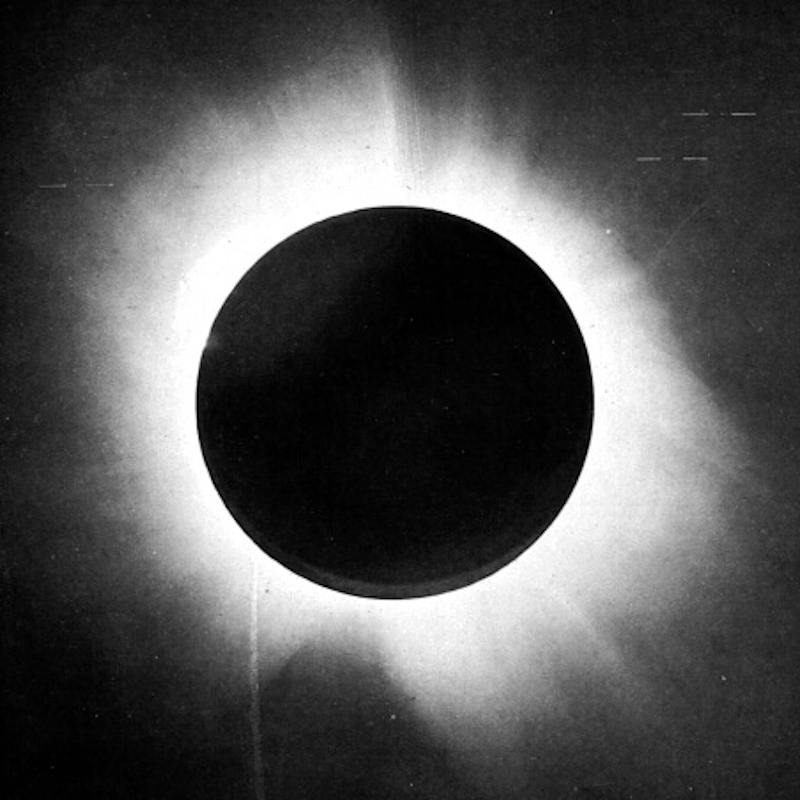
Solar eclipses are notable for the sense of wonder they inspire, and are of great scientific significance, playing a part in the discovery of helium and providing possibly the first observation of a coronal mass ejection. While researching my previous blogpost on Albert Einstein ForMemRS, my interest was piqued by the famous solar eclipse of 29 May 1919, crucial in helping to prove Einstein’s theory of general relativity.
 Albert Einstein by Ferdinand Schmutzer (Public domain, via Wikimedia Commons)
Albert Einstein by Ferdinand Schmutzer (Public domain, via Wikimedia Commons)
First presented in 1915 to the Prussian Academy of Sciences, Einstein’s theory of general relativity says that gravity is the product of the warping of spacetime. Astronomers were keen to test this, and the 1919 eclipse, with its combination of the spatial distribution of the Hyades cluster of stars near the solar limb and almost seven minutes of totality, provided an ideal opportunity for doing so. Astronomer Royal Sir Frank Dyson FRS argued that this was an unprecedented chance to take observations which ‘should serve for an ample verification, or the contrary, of Einstein’s theory’: measuring the angular deflection of starlight should confirm whether it followed the predictions of general relativity, or acted according to Newtonian gravitational laws, when passing near a massive object.
Dyson proposed an expedition to observe the eclipse and sought assistance from the Royal Society - Royal Astronomical Society Joint Permanent Eclipse Committee, set up to provide financial and technical support to scientists organising such observations. The 1919 expedition would use photographic plates to measure the position of stars relative to the Sun, and to contrast them with reference plates of the stars when the Sun was not in the field of view.
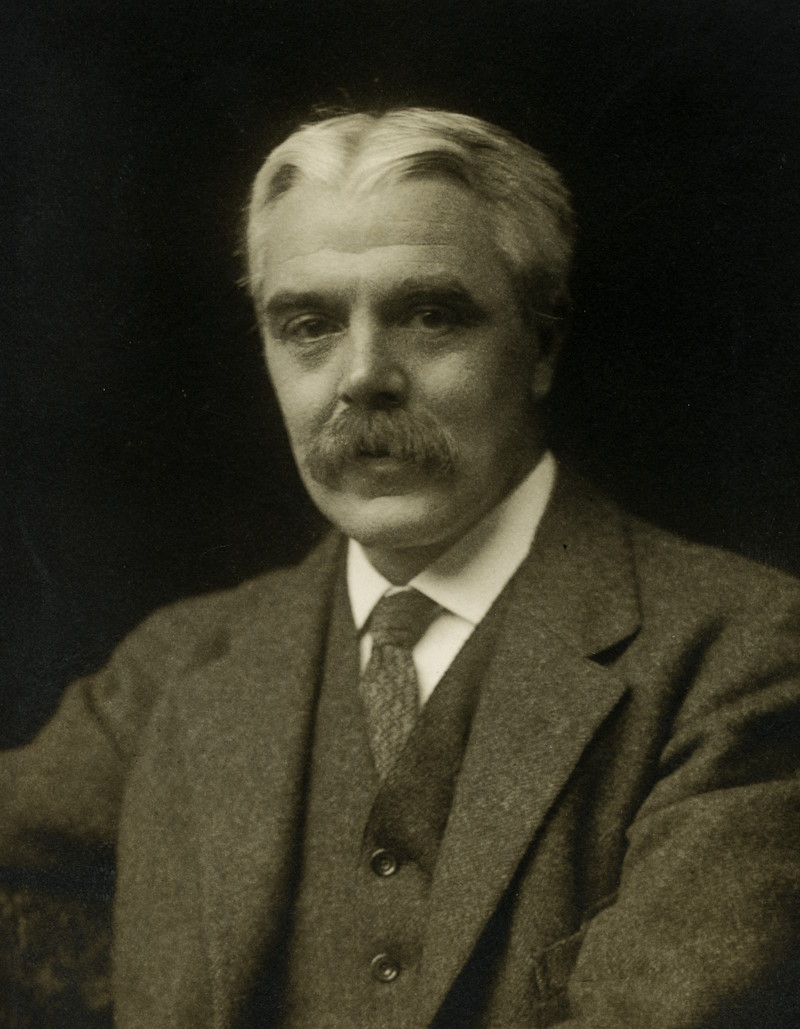 Sir Frank Dyson (RS.1042)
Sir Frank Dyson (RS.1042)
The path of totality passed from northern Brazil to west Africa, presenting logistical challenges for those organising matters in London. Dyson took charge of coordinating the expeditions and remained in England, while Arthur Eddington FRS went to Príncipe, an island off the west coast of Africa. Charles Davidson and Andrew Crommelin of the Royal Observatory in Greenwich, meanwhile, travelled to Sobral in the northeast corner of Brazil.
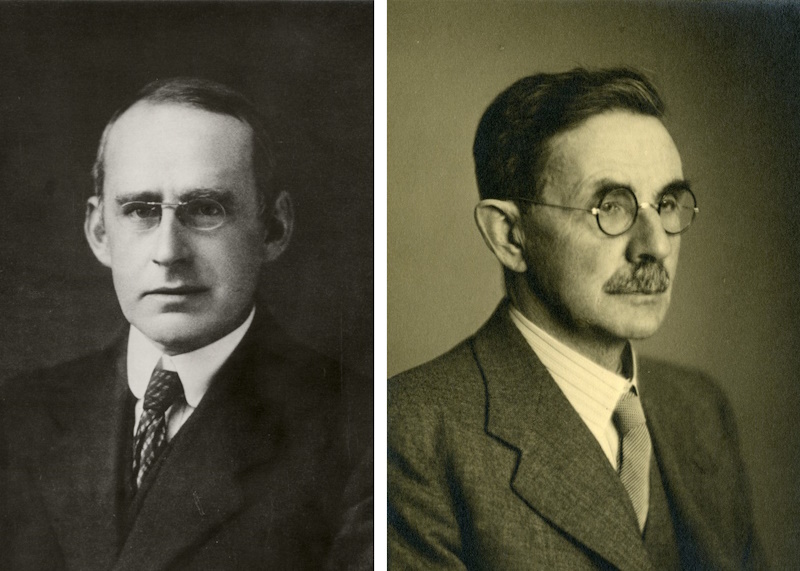 Arthur Eddington (IM/001238) and Charles Davidson (RS.19863)
Arthur Eddington (IM/001238) and Charles Davidson (RS.19863)
Eddington, convinced of the importance of Einstein’s theory, became the driving force of the expedition, which came to be known after the event as the ‘Eddington experiment’. Davidson was subsequently elected to the Fellowship of the Royal Society in 1931, in part for his ‘important photographic and spectroscopic work in many eclipse expeditions, particularly in 1919 when the bending of light by the sun's gravitational field was verified’.
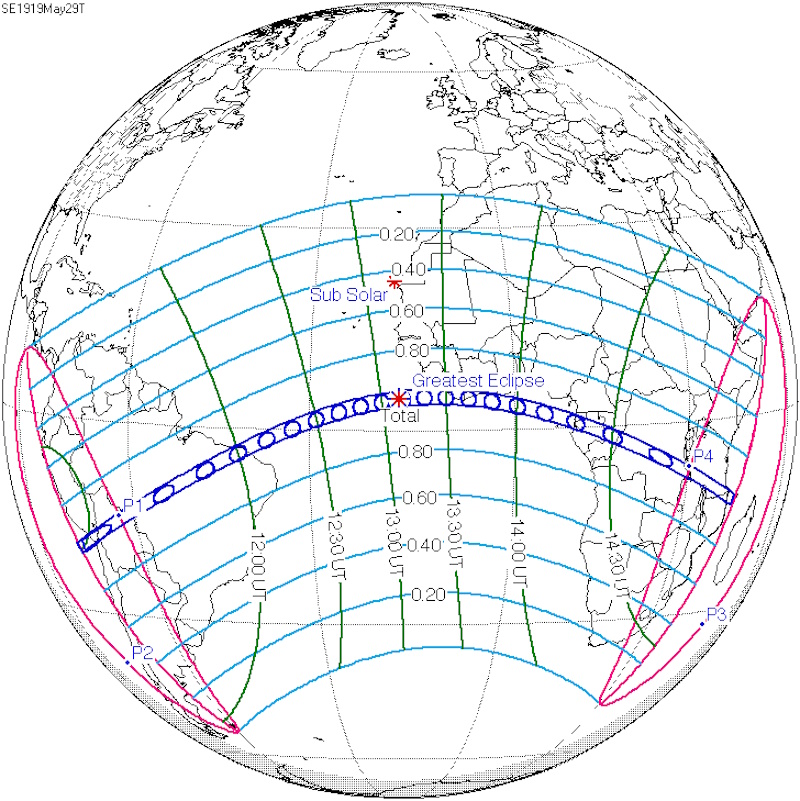 1919 eclipse predictions by Fred Espenak, NASA's GSFC (Public domain, via Wikimedia Commons)
1919 eclipse predictions by Fred Espenak, NASA's GSFC (Public domain, via Wikimedia Commons)
The Joint Permanent Eclipse Committee met twice during the early part of 1919 to complete the arrangements. The Minutes of the Annual Meeting of the Joint Permanent Eclipse Committee provide an interesting glimpse into the specifics of organising such expeditions:
Observing huts: £114-12-11
Instruments: £23-18-4
Photographic apparatus and materials: £56-1-10
Sundry apparatus: £7-1-2
Carriage of instruments: £60-4-6
Insurance: £75-14-8
Travelling expenses, Brazil: £248-4-4
Travelling expenses, Príncipe: £272-1-2
Maintenance, Brazil: £193-10-0
Maintenance, Príncipe: £45-19-2
Local labour, Brazil: £0-10-0
Telegrams and postage: £19-13-11
Total: £1117-12-00
Government Grant: £1350-0-0
Balance: £232-8-0
Despite all their preparations, the weather could not be predicted. Setbacks included storms and extensive cloud cover, but the astronomers managed to take the necessary photographs. Their apparatus comprised astrograph telescopes coupled to coelostats, mounted to track the Sun’s movement over the sky and reflect it back to the telescope.
The principal telescope taken to Sobral, featuring a 13-inch aperture and mounted to a 16-inch coelostat, was brought from the Royal Observatory. The wide field of vision it offered allowed the astronomers to photograph a large number of stars surrounding the Sun at the time of the eclipse. An additional smaller telescope was lent to the expedition by Aloysius Cortie (1859-1925), Jesuit astronomer and director of the Stonyhurst College Observatory, as a backup.
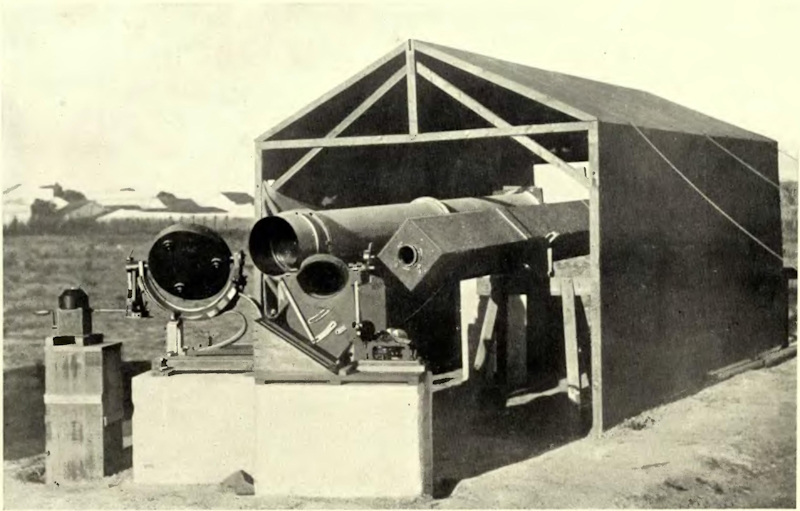 Observing shed at Sobral, Brazil, containing the telescope used by Crommelin and Davidson (C. Davidson, Public domain, via Wikimedia Commons)
Observing shed at Sobral, Brazil, containing the telescope used by Crommelin and Davidson (C. Davidson, Public domain, via Wikimedia Commons)
Of the eight photographs taken at Sobral using Cortie’s telescope, seven successfully captured stars, confirming Einstein’s theory by corroborating the predicted angular deflections. The larger astrograph lens, however, did not yield adequate images, with stars appearing out of focus, likely due to the heat of the Sun distorting the coelostat mirror. These were ultimately discounted as they did not convincingly validate the predictions of either Einstein or Newton. Stars appeared on seven plates taken at Príncipe, but only two plates were of good enough quality to be used as evidence in line with Einstein’s prediction.
In a letter to Dyson, Robert Harrison, Assistant Secretary of the Royal Society, remarked that ‘the results of the Expeditions to Sobral and Príncipe can leave little doubt that a deflection of light takes place in the neighbourhood of the Sun and that it is of the amount demanded by Einstein's theory of relativity and attributable to the Sun's gravitational field.’
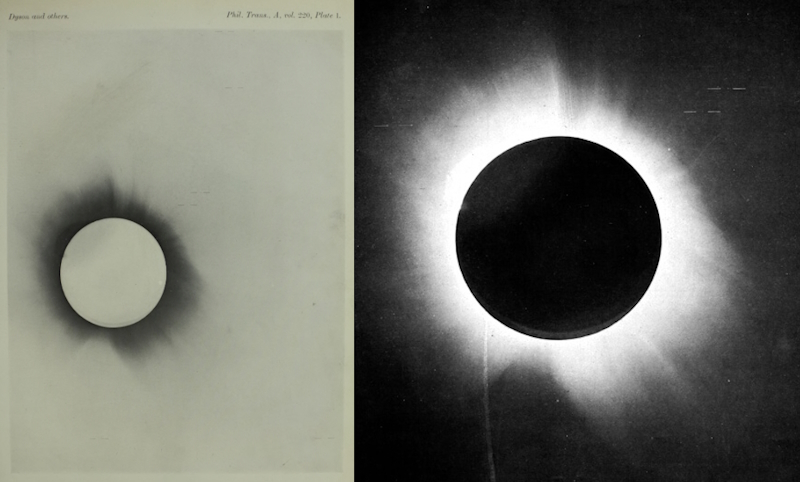 Half-tone reproduction of a negative taken with the 4-inch lens at Sobral, showing the position of the stars (Philosophical Transactions of the Royal Society)
Half-tone reproduction of a negative taken with the 4-inch lens at Sobral, showing the position of the stars (Philosophical Transactions of the Royal Society)
The results were announced by Dyson, Eddington and Crommelin at a joint eclipse meeting of the Royal Society and the Royal Astronomical Society on 6 November 1919, and subsequently published in the Philosophical Transactions. Royal Society President J J Thomson commented that the findings had been received with ‘an extraordinary degree of interest’, and declared the evidence ‘the most important result obtained in connection with the theory of gravitation since Newton’s day’.
The British press covered the discovery enthusiastically, capturing the contemporary excitement in scientific circles:
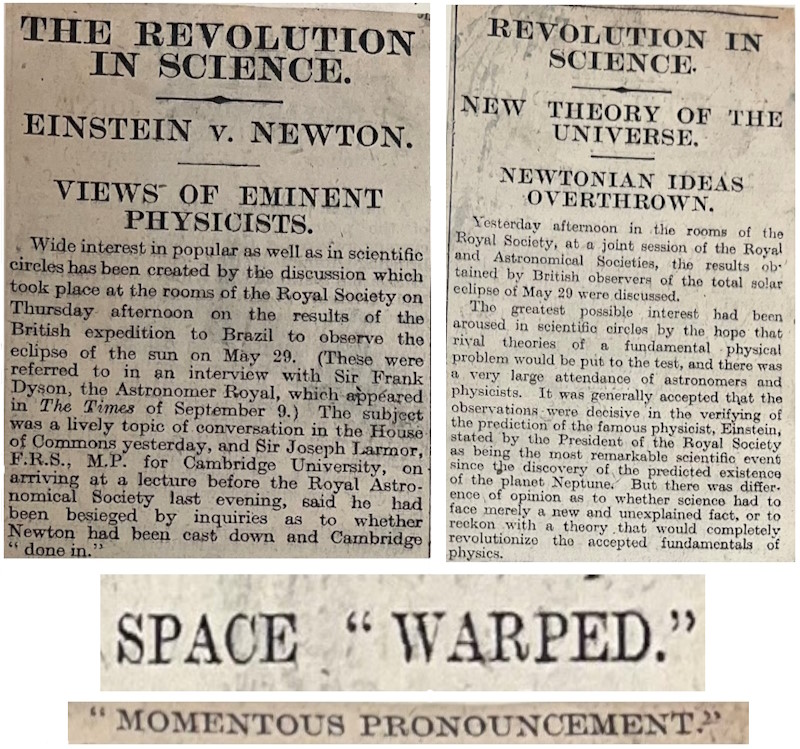 Excerpts from The Times, published 7-8 November 1919 (Royal Society Press Cuttings PC/1/28)
Excerpts from The Times, published 7-8 November 1919 (Royal Society Press Cuttings PC/1/28)
Studies of the nature of gravity continue, with intriguing observations suggesting that the universe’s expansion is accelerating, rather than slowing down as expected under gravity. This phenomenon has been attributed to dark energy, a mysterious form of energy that repels gravitationally, causing space-time to expand. However, some theorists propose an alternative explanation: the apparent acceleration may be due to the deviations from the general theory of relativity at large scales. With worldwide scientific efforts, the next groundbreaking discovery may be just around the curve: watch this space!






